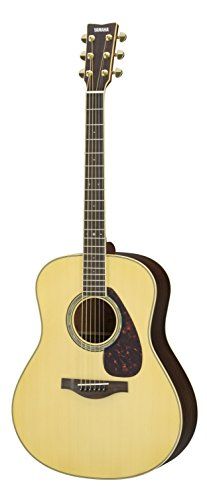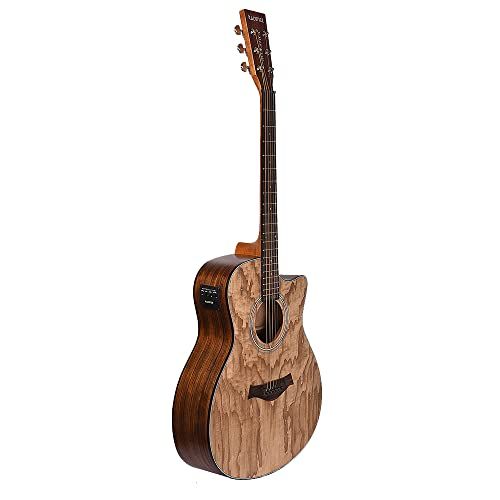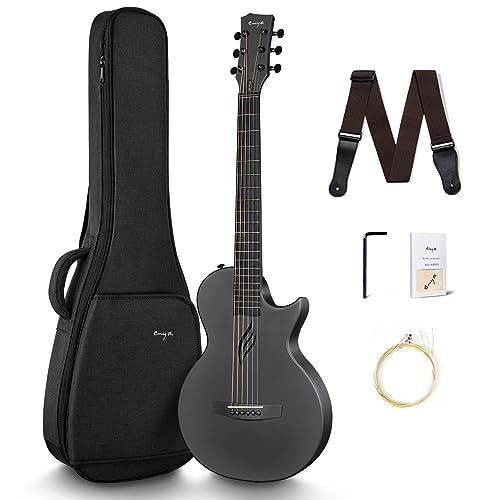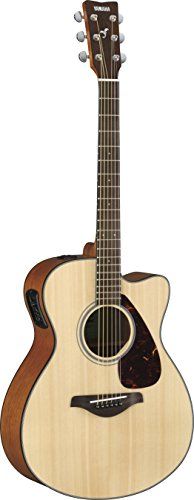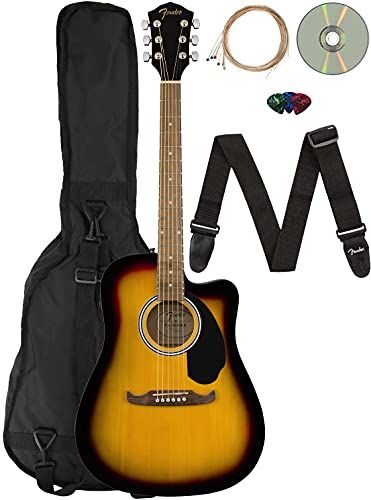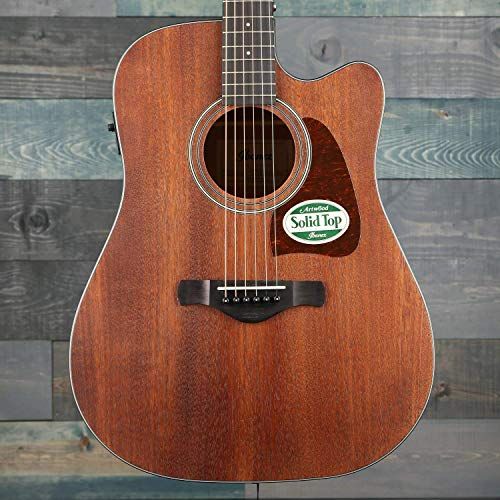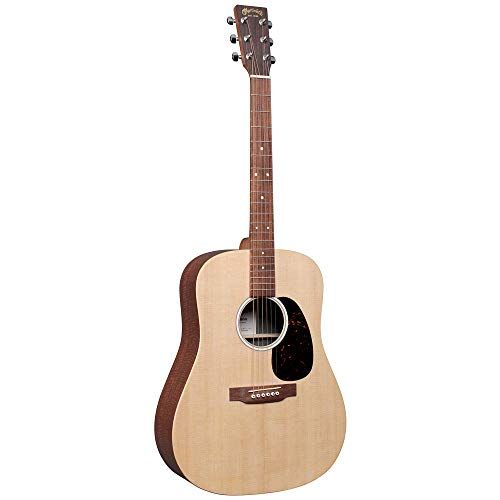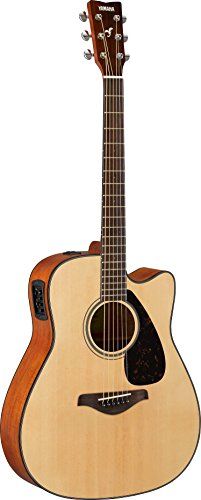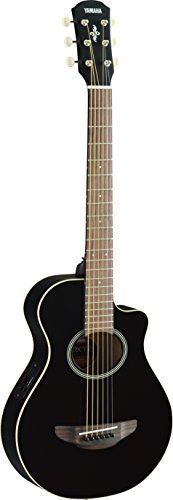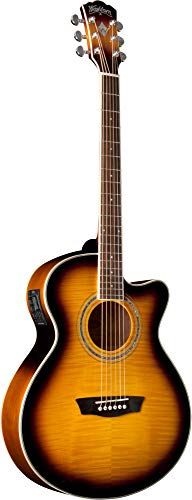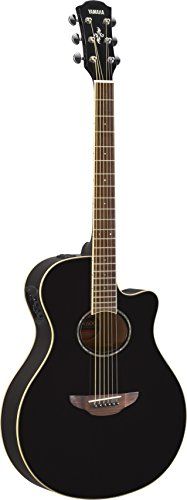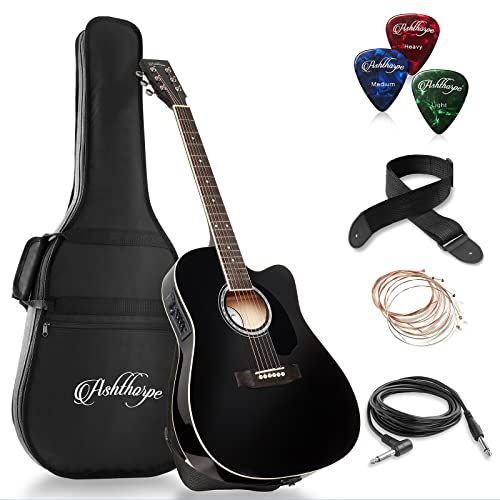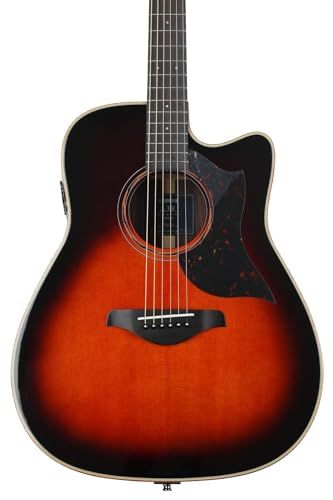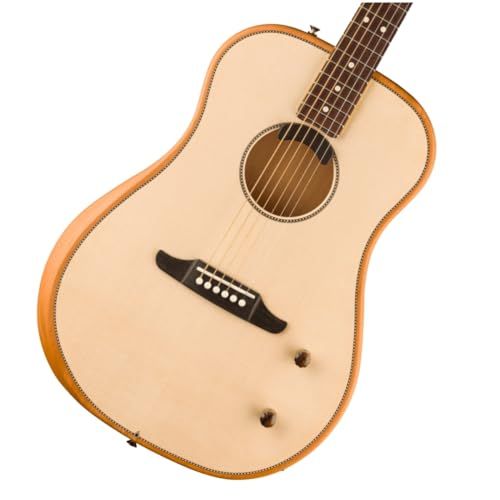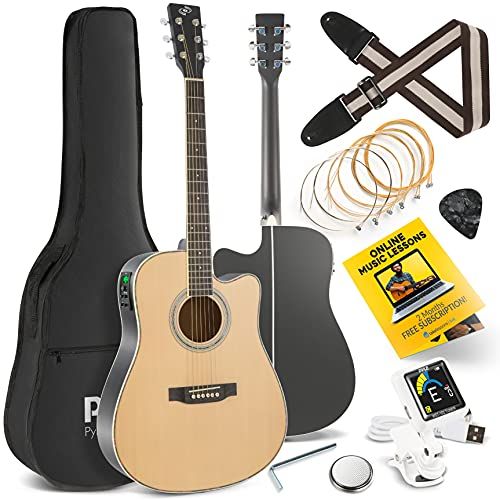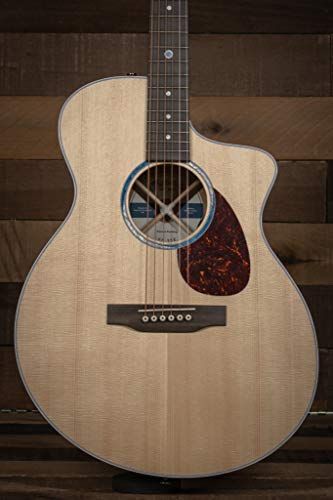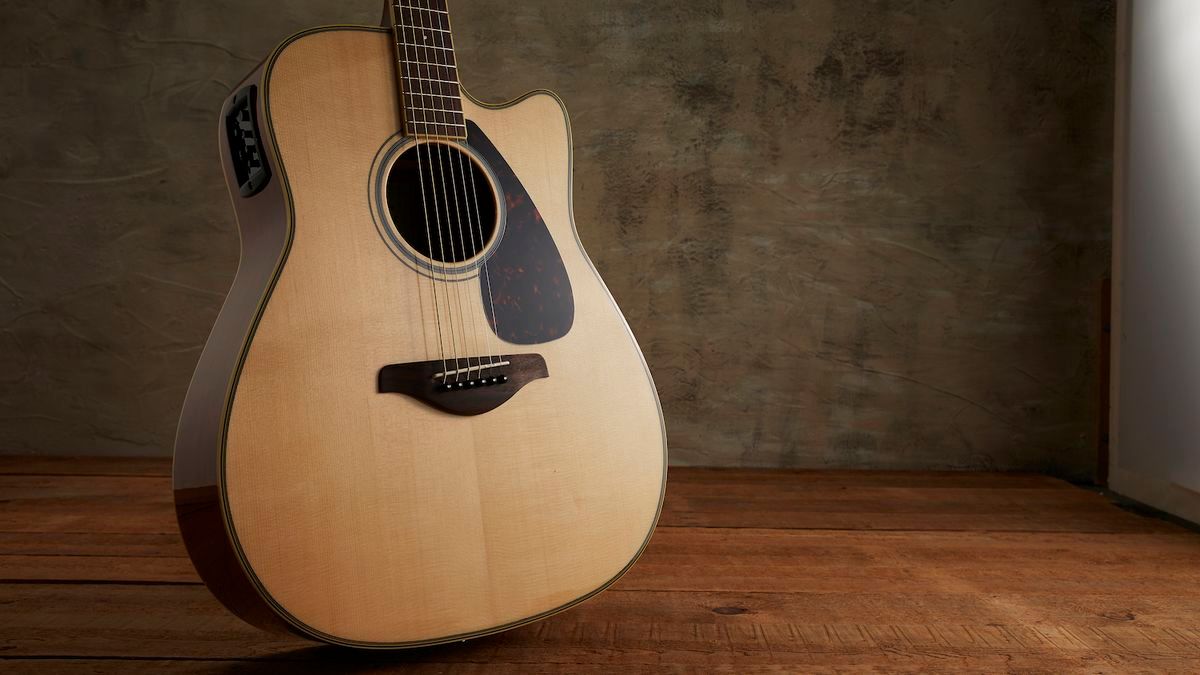
Acoustic-electric guitars are a versatile type of guitar that incorporate both acoustic and electric components. This allows them to be played without an amplifier, like a regular acoustic guitar, but also provides the option to plug into an amplifier or PA system for amplification.
The concept of the acoustic-electric guitar originated in the 1930s when guitar makers started experimenting with adding pickups and preamplifiers to their acoustic guitars. This allowed the naturally acoustic sound of the guitar to be amplified electronically. However, early acoustic-electric guitars struggled with feedback issues and achieving a balanced amplified tone.
In the 1950s and 60s, advances in pickup and preamp technology led to great improvements in amplified sound for acoustic-electric guitars. Musicians adopted the acoustic-electric guitar for its flexibility to play small coffee house gigs but also be able to play large concerts. The acoustic-electric guitar became especially popular with singers who accompanied themselves on guitar, such as folk and country musicians.
Today, acoustic-electric guitars are a mainstay for guitarists in many genres, from pop to rock to country. Their natural acoustic sound and flexibility for amplification make them one of the most versatile types of guitars available. Major guitar companies offer acoustic-electric models, featuring the latest innovations in pickup and preamp design.
Body Styles
Acoustic-electric guitars come in a variety of body shapes and sizes, each with their own sonic properties. The most common body styles are:
Dreadnought - The most popular acoustic body shape. Dreadnoughts have a wide lower bout and waist for increased projection and volume. The large body produces more bass frequencies, providing a balanced tone across the frequency range. Dreadnoughts work well for strumming and flatpicking.
Orchestra - Also called an auditorium guitar. Has a smaller body than a dreadnought, but larger than a concert guitar. Orchestras are balanced guitars suitable for fingerpicking and strumming. The smaller body increases midrange, while still providing good bass response.
Concert - Feature small, narrow bodies for enhanced playability and mid/treble frequencies. The compact size reduces projection and bass response compared to larger bodied guitars. Well suited for fingerstyle playing.
Parlor - Parlor guitars have diminutive bodies that highlight treble frequencies. Best suited for intimate playing rather than live performance. The vintage parlor shape produces a focused, articulate tone.
Jumbo - Jumbos are extra-large guitars that provide thundering bass and high volume levels. The expansive lower bout creates booming low-end tones. Jumbos are go-to guitars for aggressive strummers.
Grand Auditorium - A versatile shape balancing projection and articulation. Grand auditoriums have tapered waists to enhance midrange presence. Provides dynamics and clarity during both strumming and fingerpicking.
The body style significantly impacts tone and volume. Matching the guitar shape to your playing style and needs is crucial for optimal performance.
Tonewoods
The tonewoods used in acoustic-electric guitars have a significant impact on their sound. The most commonly used tonewoods include:
Spruce - Spruce is the standard top wood for steel-string acoustics. It's lightweight and responsive, with good projection and headroom. Sitka spruce is most common, providing a balanced tone.
Mahogany - Mahogany is a popular choice for back and side wood. It has a warm, rounded tone with good low-end response. Mahogany backs help project the top wood's tone.
Maple - Maple is a dense, hard tonewood that produces a bright, focused sound with tight lows and sparkling highs. Its hardness helps project sound. Figured maple tops are popular for visual appeal.
Rosewood - Rosewood, like East Indian Rosewood, is often used for back and sides. It has rich overtones, strong fundamentals, and excellent note separation. Rosewood's complex overtones enhance any top wood.
Koa - Koa produces a balanced tone with pronounced midrange, sweet highs, and tight lows. It has attractive figuring, and is commonly used for ukuleles and guitars.
The combination of tonewoods, along with construction methods, creates the tonal palette of each acoustic-electric guitar model. Luthiers carefully select wood pieces based on density, stiffness, and resonant qualities. Understanding tonewood characteristics helps find the right guitar to match musical needs and style.
Neck & Fretboard
The neck and fretboard are critical components that impact an acoustic-electric guitar's playability and tone. Most acoustic-electric guitars have a bolt-on neck, though some high-end models feature a glued neck joint for increased resonance.
Neck Shapes
The most common neck shapes on acoustic-electrics are the C-shape and V-shape. C-shaped necks are comfortable and accommodating for most playing styles. V-shaped necks are slimmer and allow easier access to the higher frets for lead playing. Other neck shapes like U, soft V, and exotic asymmetrical shapes are also available. The width and thickness of the neck, known as the neck profile, also affects feel.
Scale Length
25.5" is the standard scale length on most steel-string acoustic-electrics. Shorter 24.75" and 24.5" scales are also common, especially on smaller body guitars. Longer 25.75" to 26.5" scales can be found on jumbo and baritone models. Scale length impacts string tension and the overall playing experience.
Fretboard Woods
Rosewood and ebony are traditional fretboard woods prized for their hardness and durability. Ebony offers a smooth, fast feel while rosewood has more grip. Maple is a common modern alternative, providing brightness and articulation. Composite materials like Richlite are also being used on eco-friendly models. The fretboard radius, fret size, and position also affect playability.
Bridge & Saddle
The bridge and saddle on an acoustic-electric guitar have an important role in transferring string vibrations into the guitar body and pickups. The material used for the bridge and saddle impacts the tone and sustain.
Common bridge materials include rosewood, ebony, and composite materials like Micarta or Tusq. Rosewood and ebony provide a warm, rounded tone while composites give more articulation and attack. The saddle is often bone, plastic, or graphite. Bone and graphite transfer vibrations well for a full bodied tone.
Lighter weight bridge materials like composites allow the top to vibrate freely for better amplification. Dense ebony bridges provide a focused midrange tone. Rosewood offers a nice balance. Graph Tech and L.R. Baggs are popular brands for quality acoustic guitar bridges and saddles.
The ideal bridge and saddle combination depends on the guitar body materials and desired tone. Many acoustic-electric models allow some customization with alternate bridge pins and saddle materials to fine tune the timbre.
Pickups & Preamps
Acoustic-electric guitars incorporate pickups and preamps that allow the guitar's acoustic sound to be amplified electronically. There are two main types of pickups used:
Undersaddle Pickups
Undersaddle pickups are installed under the bridge saddle and sense the vibrations of the strings through the bridge. They tend to provide a balanced and natural acoustic tone. The undersaddle design helps isolate the strings' vibrations from body noise. Popular undersaddle pickup brands include Fishman and LR Baggs.
Soundhole Pickups
Soundhole pickups are mounted inside the guitar body under the soundhole. They use a tiny microphone to pick up the vibrations directly from the top soundboard. Soundhole pickups capture more body resonance for a fuller tone, but can also pick up some ambient noise. Popular models are made by Fishman, LR Baggs, and others.
Preamps & EQ
The preamp boosts the pickup's output signal so it can be amplified through an external sound system or guitar amp. Preamps allow control over the tone with EQ adjustments for bass, midrange, and treble frequencies. Some models incorporate tuners, notched filters, phase switches, and more. Higher-end preamps from Fishman, LR Baggs, and Ovation provide studio-quality acoustic tone shaping right on the guitar.
Amplification
Acoustic-electric guitars rely on external amplification to project their sound for live performances and recording. There are several options for amplifying an acoustic-electric guitar:
Acoustic Guitar Amps
Dedicated acoustic guitar amps are designed specifically to amplify acoustic guitars, without coloring the natural tone. They have features like notch filters to reduce feedback. Some allow blending between the mic and pickup signal. Popular models are made by Fishman, Trace Elliot, AER, Roland, and others.
PA Systems
For larger venues, an acoustic-electric guitar can be plugged into a PA system or acoustic instrument amplifier. The PA needs to be suitable for acoustic instruments, with appropriate EQ shaping. Sound engineers may mic the guitar separately.
Effects
Effects pedals like reverb, delay, chorus can be used to shape an acoustic-electric guitar's tone. Multi-effects processors also work well. Care should be taken not to over-process the tone.
Preamps
For acoustic players who sing, preamps with mic/guitar blending allow switching between guitar and vocals. Small pedalboard preamps can sit at a performer's feet. Rackmount preamps offer more control for the sound engineer.
Notable Models
Acoustic-electric guitars from major brands like Taylor, Martin, and Gibson have become quite popular over the years thanks to their high build quality, great tone, and ease of amplification. Here are some of the most notable acoustic-electric models on the market:
Taylor 114ce
Part of Taylor's 100 series, the 114ce features a Grand Auditorium body shape with layered walnut back and sides paired with a solid Sitka spruce top. It has a smooth satin neck and 20-fret ebony fretboard, and ES-T pickup system designed by Taylor. Priced under $1,000, it delivers Taylor's signature tone and playability at a more affordable price point.
Martin D-18E Retro
Martin's D-18E Retro is based on their classic 1930s D-18 model, with an all-solid wood body in classic dreadnought shape. It features a Sitka spruce top with mahogany back and sides, vintage-style appointments, and Fishman F1 Analog electronics. The D-18E Retro produces the full, balanced tone Martin is known for.
Gibson J-45 Standard Acoustic-Electric
Gibson's top-selling acoutic guitar, the J-45 Standard, is now available as an acoustic-electric. It has a Sitka spruce top and walnut back and sides on its iconic round-shoulder dreadnought body. It comes equipped with an LR Baggs Element VTC pickup system hand-fitted by Gibson acoustic engineers. Retaining Gibson's renowned tonewoods and craftsmanship, the J-45 Standard Acoustic-Electric amplifies their signature balanced acoustic tone.
Pricing
Acoustic-electric guitars come in a wide range of prices to suit different budgets. Here's an overview of price ranges:
Budget Under $500
Entry-level acoustic-electric guitars usually cost between $200-$500.
Major brands like Fender, Yamaha, Epiphone and others have models in this range: Yamaha FSX800C, Washburn C64SCE-A.
These guitars often have laminate wood construction and basic electronics.
Great for beginners and casual players looking for an affordable acoustic-electric.
Mid-Range $500-$1000
Guitars that cost $500-$1000 offer better build quality with solid wood tops.
Many big brand models like the Yamaha A3R TBS and Martin 11DX1E-01 are in this price range.
The electronics and preamps are higher quality, providing better amplified tone.
A sweet spot for intermediate players and working musicians.
High-End $1000+
Premium acoustic-electric guitars over $1000 feature all solid wood construction and top-tier components.
High-end models from Martin, Taylor 200 Series Deluxe 224ce-K-DLX, Gibson, and boutique brands.
Sophisticated electronics with tuners, EQ and other options.
Choice of discerning professionals and serious hobbyists.
The price range gives a good indication of the guitar's quality and suitability for different playing levels. Consider your budget and needs when looking for an acoustic-electric.
Conclusion
Acoustic-electric guitars combine the warmth and resonance of an acoustic guitar with the accessibility and flexibility of electric amplification. This unique blend produces an incredibly versatile instrument suitable for both live performance and recording.
Throughout this article, we explored the key components that go into a quality acoustic-electric guitar. From the tonewoods comprising the body, to the bridge and saddle design, to the onboard pickups and preamps - every element contributes to the instrument's amplified voice.
While maintaining the rich, nuanced sound of an all-acoustic guitar, the addition of pickups and an onboard preamp gives players control over their sound. Volume can be adjusted as needed, EQ can be sculpted to fit the mix, and effects can be added to craft just the right tone.
Acoustic-electric guitars remove the limitations of a purely acoustic instrument. No longer do guitarists need to struggle to be heard over other musicians or background noise. The built-in pickups and preamp ensure the guitar's voice can hold its own on any stage or in any recording studio.
With so many outstanding models to choose from across various price points, there is an acoustic-electric guitar for every budget and playing style. This versatility, along with the beautiful craftsmanship and premium tonewoods often found on acoustic-electrics, makes them an investment that can last a lifetime.
In closing, acoustic-electric guitars represent the best of both worlds. From practice and recording, to live performance, these incredible instruments open up musical possibilities that were simply not available previously. Both onstage and in the studio, acoustic-electric guitars enable musicians to harness the rich acoustic tone that makes them so special while gaining all the advantages of amplification and effects. This winning combination cements their status as indispensible tools for the modern guitarist.
Acoustic-Electric Guitars comparison
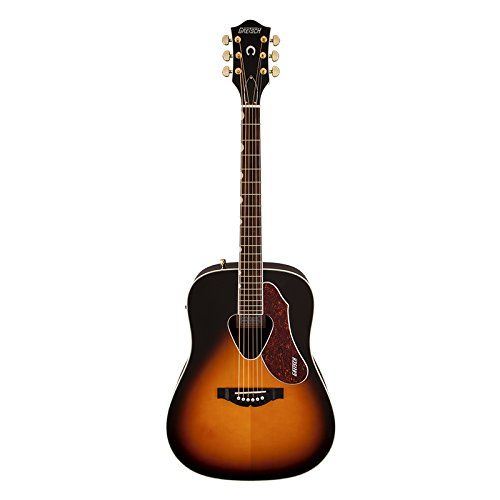 |  | 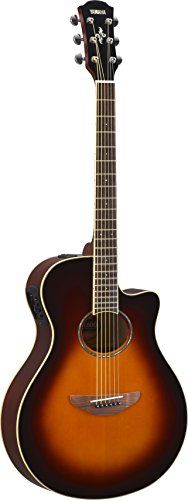 |  | 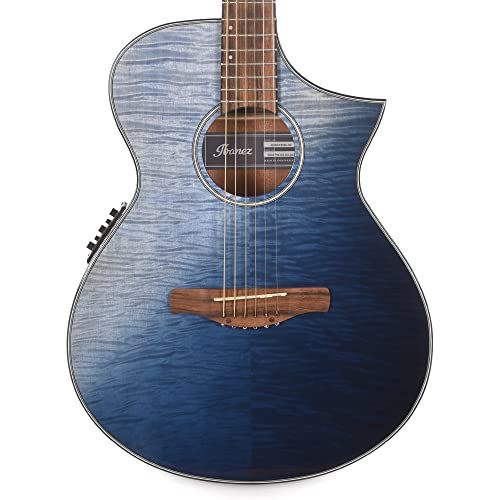 | |
|---|---|---|---|---|---|
| Model | Gretsch G5024E 2714035500 | Luna Guitars HEN PA SPR | Yamaha APX600 OVS | Traveler Guitar Redlands Concert | Ibanez AEWC32FM AE |
| Brand | Gretsch | Luna Guitars | Yamaha | Traveler Guitar | Ibanez |
| Back Material | Mahogany Wood | Mahogany Wood | Mahogany | Koa Wood | Sapele Wood |
| Batteries | - | - | 2 AA batteries required. | - | - |
| Body Material | Rosewood | Mahogany | Mahogany | Koa | Sapele |
| Color Name | Sunburst | Natural with Laser-etched Henna Paradise design | Old Violin Sunburst | Koa | Indigo Sunset Fade |
| Fretboard Material | Rosewood | Mahogany Wood | Rosewood | Laurel Wood | Walnut Wood |
| Guitar Pickup Configuration | Piezo | No Pickup | Piezo | Piezoelectric | Piezo |
| Item Model Number | 2714035500 | HEN PA SPR | APX600 OVS | Redlands Concert | - |
| Item Weight | 9.6 pounds | 5.25 pounds | 1 pounds | 9.68 pounds | 6 pounds |
| Neck Material Type | Mahogany | Mahogany | Mahogany | Mahogany | Nato Wood |
| Number of Strings | 6 | - | - | - | 6 |
| Scale Length | 25.5 Inches | - | - | - | 634 Millimeters |
| String Material | - | coated_phosphor_bronze | Phosphor Bronze | Phosphor Bronze | - |
| Top Material | Rosewood, Mahogany Wood, Spruce Wood | Mahogany Wood, Spruce Plywood, Spruce Wood | Spruce | Wood | Maple Wood, Sapele Wood |
| Color | Sunburst | Natural with Laser-etched Henna Paradise design | Old Violin Sunburst | Koa | Indigo Sunset Fade |
| Fretboard Material Type | Rosewood | Mahogany Wood | Rosewood | Laurel Wood | Walnut Wood |
| Hand Orientation | - | Right | Right | Right | - |
| String Material Type | - | coated_phosphor_bronze | Phosphor Bronze | Phosphor Bronze | - |
| Top Material Type | Rosewood, Mahogany Wood, Spruce Wood | Mahogany Wood, Spruce Plywood, Spruce Wood | Spruce | Wood | Maple Wood, Sapele Wood |
| Price | $449.99 | $255.76 | $339.99 | $349.99 | $449.99 |
FAQ
What are acoustic-electric guitars?
Acoustic-electric guitars are a type of guitar that can be played acoustically without amplification, or plugged into an amplifier or PA system to make them louder. They have built-in pickups that capture the guitar's sound and convert it into an electrical signal.
What are the benefits of acoustic-electric guitars?
Some key benefits of acoustic-electric guitars include the ability to play them loudly when amplified, versatility to play acoustically or plugged in, and the convenience of not needing external pickups or microphones. They provide the rich, resonant sound of acoustic guitars along with the volume and tone-shaping abilities of electrics.
How do acoustic-electric guitars work?
Acoustic-electric guitars have a built-in preamp and pickup system that allows them to be plugged into an amplifier or PA system. The pickup converts the vibrations of the guitar's body and strings into an electronic signal, which is then shaped by EQ controls and sent to the amp or mixer. This lets you amplify the guitar's sound.
What types of pickups do acoustic-electric guitars use?
Common acoustic-electric guitar pickups include piezo, soundhole, and undersaddle pickups. Piezo pickups are located under the bridge saddle and sense vibrations. Soundhole pickups are mounted inside the soundhole and capture top vibrations. Undersaddle pickups sit under the saddle and pick up string vibrations.
How do I plug in and amplify my acoustic-electric guitar?
First, take a 1/4" instrument cable and plug one end into the output jack on your acoustic-electric guitar. Plug the other end into an amplifier, PA system, or mixing board input. Turn up the volume and adjust the EQ settings as desired. Make sure the guitar's onboard preamp or tuner is turned on.
What should I look for when buying an acoustic-electric guitar?
Look for a guitar with a solid top like spruce or cedar, quality electronics including an equalizer, durable hardware, comfortable neck and body size, quality materials and craftsmanship, and a pickup/preamp system that suits your needs. Also look for good intonation up the neck.
Are acoustic-electric guitars harder to play than regular acoustic guitars?
Acoustic-electric guitars are not necessarily harder to play than regular acoustic guitars. The main difference is they have slightly higher string tension due to the pickups and onboard preamp. This can take some adjustment for beginners, but intermediate and advanced players adapt quickly. The neck width and profile have more effect on playability.
How do I care for my acoustic-electric guitar?
Regular cleaning, changing strings regularly, proper storage at around 45-55% humidity, avoiding extreme temps, and having setup adjustments done yearly will help maintain your acoustic-electric guitar. Also be gentle with the input jack when plugging and unplugging.
Should I buy an acoustic-electric guitar as a beginner?
Acoustic-electric guitars work well for beginners, as they provide sound projection when played unplugged and the option to play plugged in and amplified. This gives beginners flexibility. However, a basic acoustic guitar may be better to learn the fundamentals. Consider your needs.
What's better, acoustic-electric or pure electric guitars?
This depends on your musical needs and preferences. Acoustic-electrics provide versatility but they don't replicate the sounds of a solidbody electric guitar. Electrics offer more overdriven/distorted sounds and playing styles. Choose based on the tones and playing experience you want. Ultimately it comes down to personal taste.
